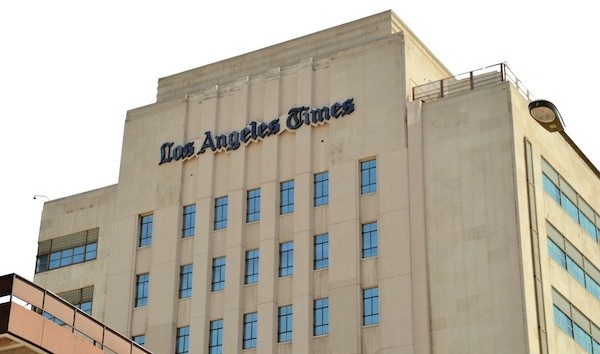In Spinoffs a Chance to Jettison Liabilities
Post on: 5 Июль, 2015 No Comment

By Steven Davidoff Solomon March 12, 2013 5:44 pm March 12, 2013 5:44 pm
Harry Campbell
A spinoff is a product of Wall Street math that says one plus one can equal three. Yet as shareholders of Time Warner may be about to find out, it can also be all about subtraction, as a company ditches an unwanted business, in this case, magazines.
The business argument for a spinoff is typically that a separation of the assets allows both the former parent and the newly independent company to be better run, freeing management to take bolder steps with the new company. And because Wall Street is a place where magic works, the market will recognize this, giving each of the separated companies a higher price.
There is evidence of this effect. Studies of spinoffs have found that they produce short-term gains, although these gains evaporate over the long term.
Spinoffs, not surprisingly, are big business these days on Wall Street. Last year, there were 85 spinoffs worldwide worth $109 billion, according to Dealogic, down just a bit from 93 spinoffs worth $128 billion in 2011.
But spinoffs have a dark side, as they can serve as a convenient dumping ground. In 1999, General Motors spun off its auto parts maker into Delphi, and the following year, Ford Motor did the same with Visteon. Both automakers larded the subsidiaries with too much debt, high labor costs and sweetheart pricing deals. The result sent both spinoffs into bankruptcy. Ford and G.M. are still dealing with the fallout and litigation.
These deals show the temptation lurking in a spinoff: liabilities can be freely attached to the company being spun off. This is often management’s best opportunity to burnish its own company at another’s expense. It’s hard to resist.
Take Tronox, the world’s third-largest maker of pigment titanium dioxide, which was spun off from Kerr-McGee in 2006. It was given all of Kerr-McGee’s environmental liabilities plus $200 million in debt, which it used to pay a pre-spinoff dividend to the parent. The company went bankrupt and is still litigating with Andarko, which later acquired Kerr-McGee, over allegations that the company had been sent off into the world without the resources to survive, let alone thrive.
Another example is Idearc’s spinoff from Verizon. Before being set free, Idearc claims that it took on $9 billion in debt to pay Verizon, also transferring some $2 billion in cash to Verizon. Idearc, a print and online directory business, soon went bankrupt. Idearc’s bankruptcy trustee later sued Verizon, claiming that the spinoff was a convenient way to get rid of a business Verizon did not know what to do with.
The reason a spinoff is a preferred way to get rid of businesses a company no longer wants is that shareholders have no choice in the matter. The decision is simply made by the board.
The alternative is a sale of the company, but that requires someone to buy it. A spinoff is thus not only an alluring and convenient way to clean up the parent’s balance sheet, it is also a way for managers to show faster earnings improvement by easily discarding a low- or no-growth business.
Another example is Blockbuster. Unable to sell the video rental company, its parent, Viacom. spun it off, but before doing so arranged for the company to borrow $1 billion and pay a $905 million special dividend. Unfortunately, Blockbuster was spun off just as the industry began to experience big changes. With a bigger parent company, Blockbuster might have survived; but it was unable to cope and it, too, filed for bankruptcy.
Sometimes, businesses are spun off simply because they make no sense together. As a result, Frankenstein companies, random businesses stitched together, are created and sent out to the public markets without a clear strategy.
The Campbell Soup Company spun off Vlasic Foods International in 1998 in order to focus on its higher margin and growth brands. Vlasic had its well-known pickle business, but also assets that Campbell had tried to sell but failed, including a mushroom grower and Argentine cattle operation.
In addition, $500 million in debt was transferred to the new company. Vlasic Foods announced a reorganization four days after the spinoff and announced three months later that it was likely to default on its debt, eventually declaring bankruptcy.
This brings us to Time Warner. After failed talks that would have created a joint venture magazine company with Meredith, Time Warner was faced with the unpalatable choice of keeping the magazines or spinning them off.
It may seem that there ought to be another way out. What about those private equity firms sitting on hundreds of billions of dollars in cash? No one wants to take the risk of a troubled business.

Time Warner had to make similar decisions before. In the case of AOL. Time Warner’s goal seemed to be to flee its disastrous combination with the former America Online by spinning off the business rather than trying to ensure AOL’s survival. Still, Time Warner did spin off the business free of debt, and AOL’s stock price has almost doubled since the time of the split.
Having succeeded with the AOL spinoff, Time Warner is trying the same trick. Again, the spinoff is more about Time Warner than the magazine business. The first reason the company gave for the move was that “a complete spinoff of Time Inc. provides strategic clarity for Time Warner Inc. enabling us to focus entirely on our television networks and film and TV production businesses, and improves our growth profile.” In other words, it’s all about me. Not surprisingly, analysts agreed and applauded the move as a good way for Time Warner to improve its growth and therefore stock price.
But the magazine business, with approximately 90 titles, is struggling. Revenue in Time Warner’s publishing division is down about 30 percent from 2007, although it still makes a profit, reported to be $420 million last year. Last year, the publishing division reported a 4.8 percent fall in subscription revenue, with advertising revenue declining by 5.4 percent. True, the business includes popular magazines like Sports Illustrated, People and Time. but the company has not expanded aggressively into digital, and many of its international titles like Horse and Hound lack appeal in the United States.
A spokesman for Time Warner said that the details of the spinoff were still being worked out but that an independent Time Inc. would be able to focus on its business objectives, attract new shareholders and have more “flexibility to pursue strategic opportunities that arise.”
Still, the question is whether the Time magazine portfolio spinoff will have the resources to turn itself around. In News Corporation ’s planned spinoff of its publishing assets, it is capitalizing the business with $2.6 billion to ride the storm.
Even if Time Warner is generous, it still leaves the spun-off business without much of a strategy. Perhaps seeing the writing on the wall, the current chief executive of Time Inc. Laura Lang, will not stick around to run the public company.
In other words, the new Time doesn’t even have a leader to guide it through this difficult transition. Any leadership is going to have to execute a turnaround with limited resources and in the public glare (Dell says it is going private just for this reason).
A spinoff may be a good move for Time Warner and its management, saving them the trouble of having to turn around this business. But the real question is whether it is just a way for Time Warner to take out the trash and leave yet another wounded spinoff to struggle in the market. This may satisfy the Wall Street magicians, but how does it actually create value?
A version of this article appears in print on 03/13/2013, on page B 9 of the NewYork edition with the headline: In Spinoffs, a Chance to Jettison Undesirable Liabilities.














